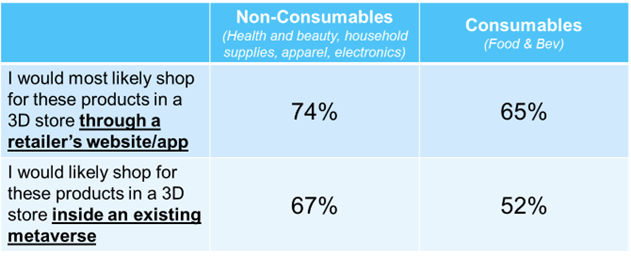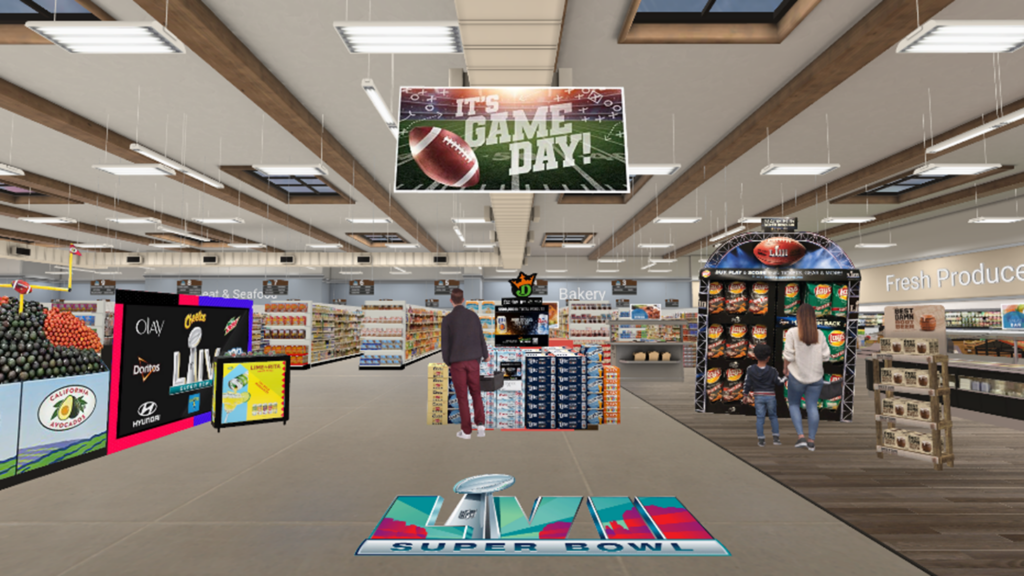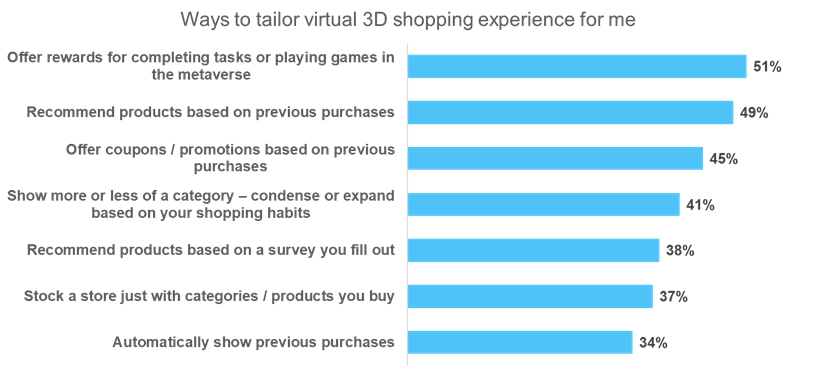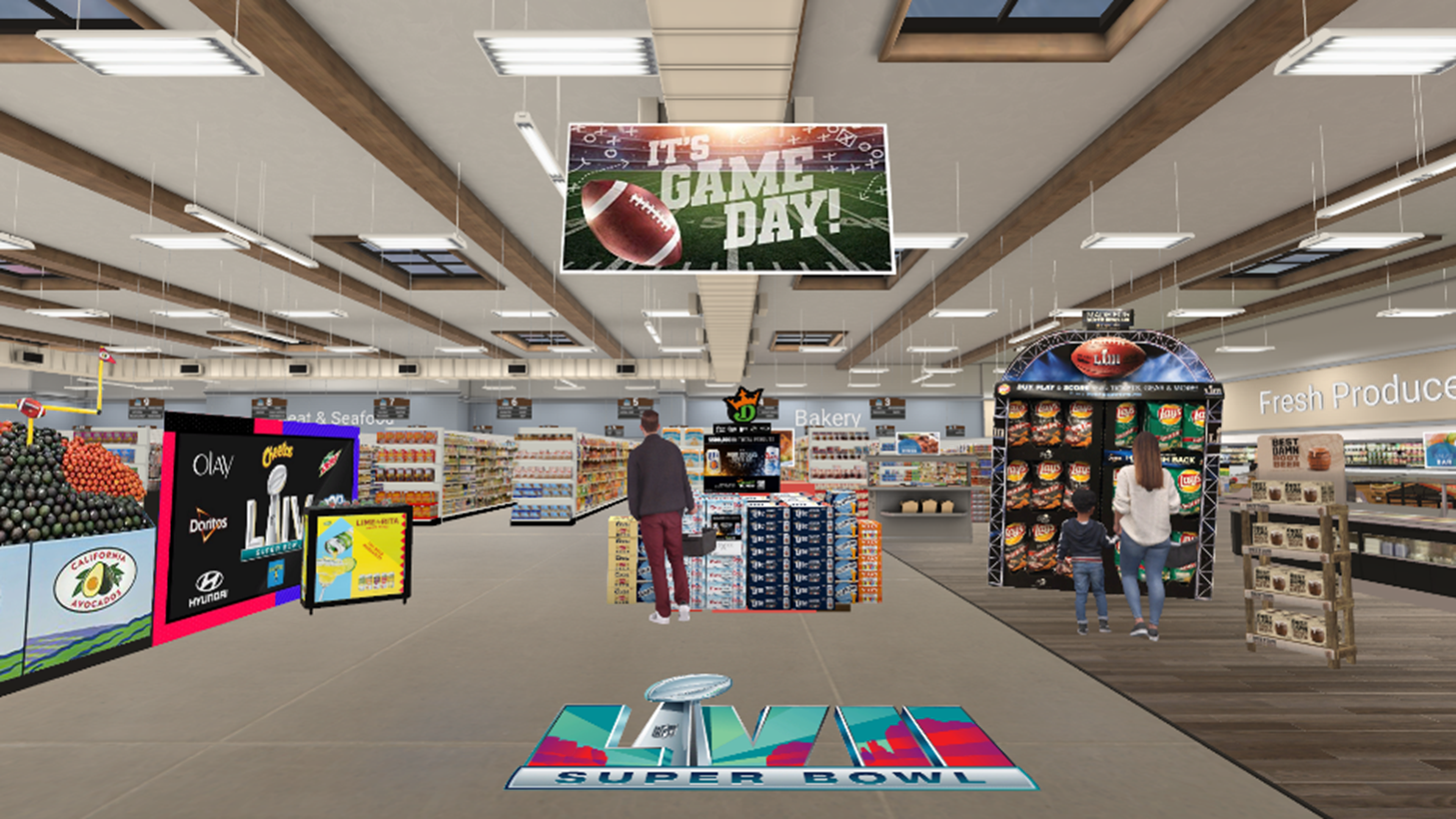A must-read article from Brian Solis came out recently talking about the true opportunity for digital and metaverse brand experiences today. The majority of the population may not be ready for fully immersive metaverse experiences using goggles or headsets to be a part of their everyday lives, but there is more than one way to play in virtual or augmented reality experiences. Many commercially successful metaverses exist today that have scale and reach.
At its most basic level, roughly three-fourths of US consumers are actively engaged with gaming systems today in some way. Nearly 100 million households are at least somewhat familiar with these platforms, and half are playing at least weekly.
Why is this important? The two largest metaverse experiences today are accessed through gaming systems – both of which are tremendously popular not only among adults, but also among children under 18. We shared that nearly half of US households engage with either Fortnite or Roblox in some way today. There are also many households engaging with focused metaverse experiences like SecondLife and Decentraland.
So many of today’s brands want to know: is it the right time to start exploring virtual or metaverse brand experiences? The simple answer is yes. There is a sizeable market to test ideas and develop brand strategies that optimize virtual or augmented reality assets where consumers would most use them today.
In addition, per the article shared above, virtual and metaverse experiences can be translated very clearly into viable ways to drive commercial value – real revenue – both digitally and in physical stores. Brands or retailers just need to get creative. Forever 21 took a unique digital asset – the Forever beanie – available to Roblox users for $1 and sold one million digital hats. It was so popular that they then created a limited-edition version of that physical hat to their stores and sold it for $14.99, after proving that it was something their consumers were interested in.
 Forever 21’s Forever Pink Beanie Available in Roblox FOREVER 21
Forever 21’s Forever Pink Beanie Available in Roblox FOREVER 21
At InContext, we have been working with consumers using virtual shopping experiences for over a decade as a way to predict what their behavior might look like in store. However, in 2020, we started to really dig into what consumers might want in a virtual commerce experience – whether that’s through their favorite grocery store website or through a metaverse platform. Very simply, consumers want to shop virtually across multiple categories They are open to shopping in metaverse environments, but right now most would start by shopping a virtual commerce experience on a retailer’s website.
 % of shoppers that would buy virtually by department
% of shoppers that would buy virtually by department
Taking it one step further, half of US consumers say they like the idea of a customized store tailored to them, regardless of whether it is in a metaverse environment or simply connected to an existing retailer or brand’s eCommerce website.

Potential Superbowl Virtual Concept Store
Tailoring custom virtual commerce solutions is quite simple. A lot of the tactics and strategies are fundamentally the same that we use in-store or online today. You just have to make simple tweaks to the basics – couponing, product recommendations, loyalty programs, and optimized assortment.
 % of shoppers that believe each item is a way to tailor virtual experience
% of shoppers that believe each item is a way to tailor virtual experience
Consumers want to experience your brands today via virtual commerce. Do you need help pulling together a strategy to bring your brand to life with an immersive digital experience? Let us help you! Contact us to learn more and to discuss how to start building your virtual reality and metaverse commercial roadmap.
This post was written by Diana Sheehan, Principal – Consulting Services.




